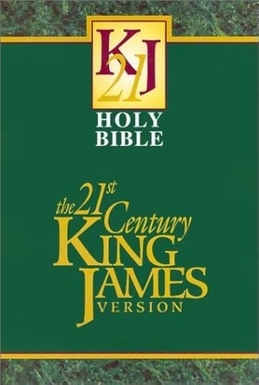1599 Geneva Bible (GNV)
The Geneva Bible: A Cornerstone of English Protestantism A Testament to Reform The 1599 Geneva Bible... Read More
The 21st Century King James Version (KJ21) is a unique undertaking in the realm of Bible translations. It represents an attempt to bridge the gap between the time-honored beauty and familiarity of the King James Version (KJV) and the demands of modern readership.

Unlike many modern translations that seek to render the biblical text into contemporary English, the KJ21 aims to retain the stylistic and theological character of the original KJV. It does this while addressing the challenge of archaic language that can hinder comprehension for contemporary readers.
The KJ21 is primarily intended for readers who appreciate the heritage and theological richness of the KJV but find its language challenging. It seeks to offer a version that is both faithful to the original text and accessible to a wider audience.
The KJ21 has generated a mixed response. Some readers and scholars commend it for its careful approach and success in preserving the KJV's character while enhancing readability. Others argue that it compromises the poetic beauty and historical significance of the original text.
Despite the differing perspectives, the KJ21 has undoubtedly contributed to the ongoing conversation about Bible translation and the challenges of making ancient texts relevant to contemporary readers.
To fully appreciate the KJ21, it is helpful to compare it with other versions of the Bible. While the New King James Version (NKJV) also aims to preserve the KJV's style, it often makes more significant textual adjustments. Modern translations like the English Standard Version (ESV) and the New International Version (NIV) prioritize contemporary language and readability over stylistic preservation.
The 21st Century King James Version represents a unique and ambitious endeavor. By carefully modernizing the language of the KJV while preserving its essential character, it offers a compelling option for those seeking a bridge between tradition and accessibility.